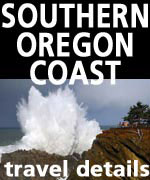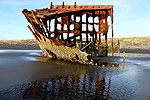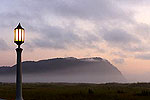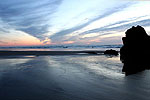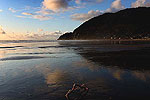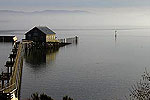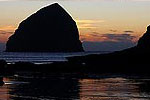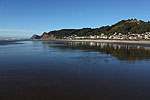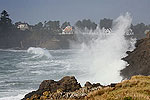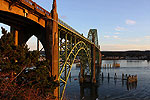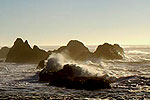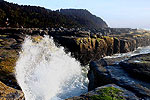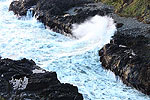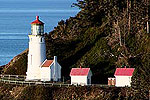Cape Perpetua's Striking Science: Volcanoes to Bears on Oregon Coast
Published 01/11/22 at 5:52 PM PST
By Oregon Coast Beach Connection staff
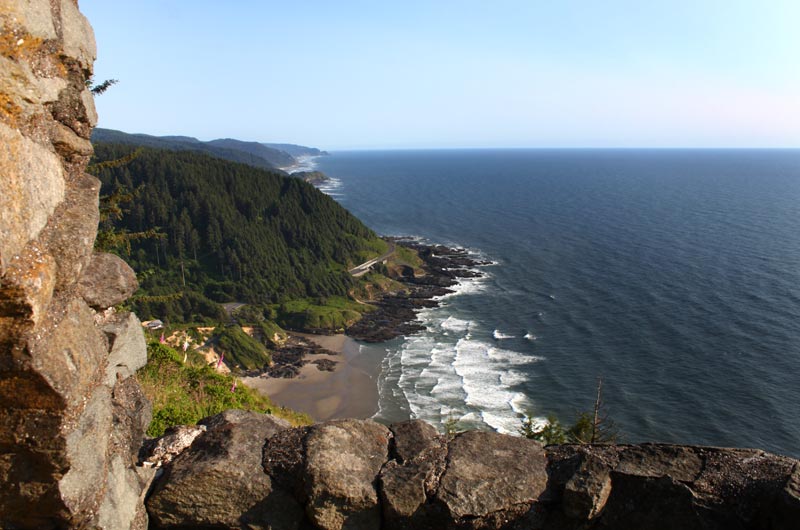
Includes exclusive listings; some specials in winter
In Cannon Beach:
Includes rentals not listed anywhere else
In Manzanita, Wheeler, Rockaway Beach:
Some specials for winter
In Pacific City, Oceanside:
Some specials for winter
In Lincoln City:
Some specials for winter
In Depoe Bay, Gleneden Beach:
Some specials for winter
In Newport:
Look for some specials
In Waldport
Some specials for winter
In Yachats, Florence
Some specials for winter
Southern Oregon Coast Hotels / Lodgings
Reedsport to Brookings, places to stay; winter deals
(Yachats, Oregon) – Some areas of the central Oregon coast are still almost completely wilderness, even if there's chunks of civilization dotted throughout. Among them are Cape Perpetua, that soaring, rugged shape that juts up from the winding path through beach views and dark forest tracts just south of Yachats.
And there's so much more to this central coast landmark than people realize, including a spooky past rooted in having once been a fiery, violent volcano.
Cape Perpetua's Height. How tall is Cape Perpetua? This favorite central Oregon coast viewpoint rises some 800 feet into the sky, as measured from sea level. Spectacular Cape Foulweather a ways to the north only clocks in at 500 feet high.
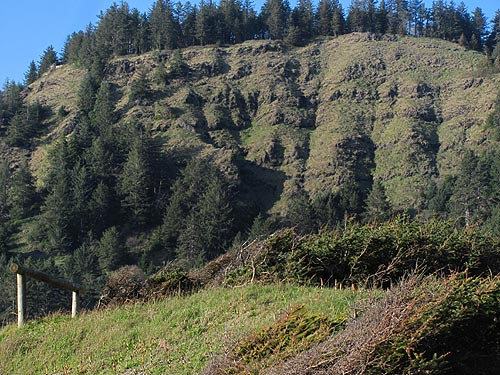
Tillamook Head, Humbug Mountain and Neahkahnie Mountain are much higher (at least 1400 feet), but their summits and viewpoints aren't easy to reach. Those all require a strenuous hike. While Cape Perpetua is a bit of a winding drive, it's quick and painless by comparison.
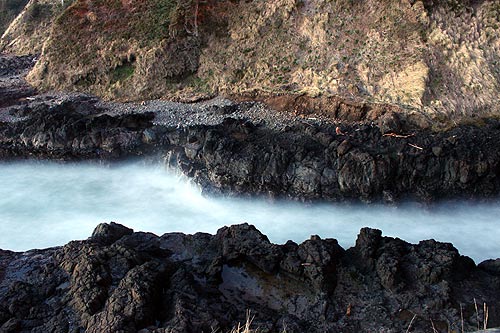
Perpetua's Fiery Past. Little do most people know, when they're standing atop this gorgeous viewpoint they're standing on an old volcano.
Cape Perpetua was a massive volcano about 50 million years ago, one that was likely fueled by a giant soft spot in the Earth's crust. Scientists say it's the same crack that now powers Yellowstone National Park, but continental drift over those tens of millions of years moved it considerably.
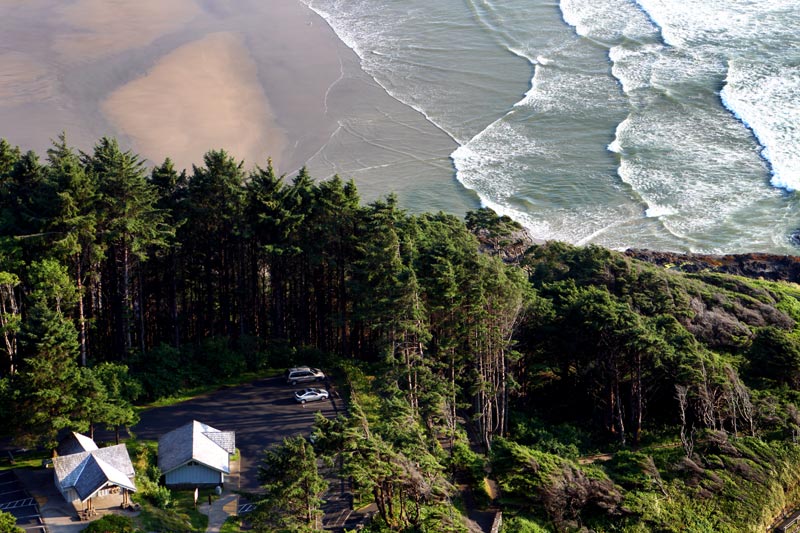
Another theory has it that it there was another fault line around this area that funneled magma into the volcano, but it petered out around 40 million years ago.
Whatever the case, Perpetua the volcano is responsible for a lot of basalt (former lava flows) you see in the surrounding area. But not all. There were other volcanoes in this area on and off, and some basalt flows simply come from the big eruptions of 35 million years ago, where that same soft spot was located in what was then Idaho spewed oceans of lava that reached all the way here.
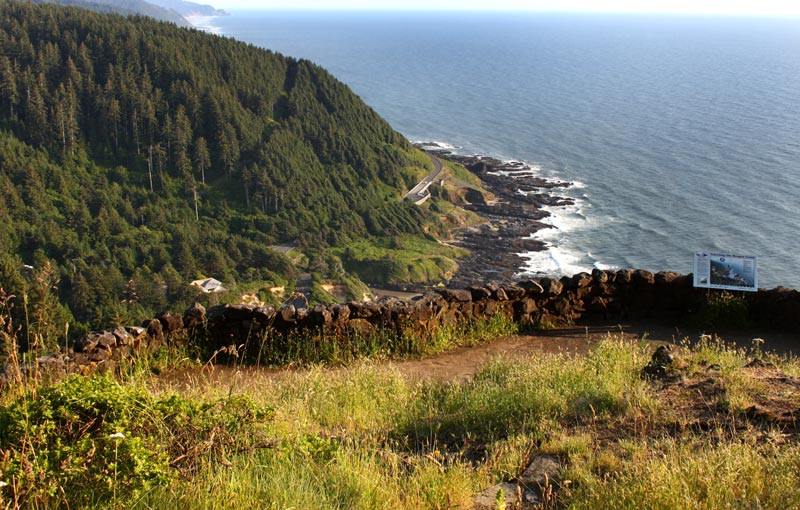
The Black Bears of Perpetua. Periodically, if you're super lucky, you might spot a black bear roaming in the Cape Perpetua area. They are “not common,” as the Cape Perpetua Visitors Center told Oregon Coast Beach Connection, but they can occasionally be spotted on the trails in the area (such as Cummins Creek trail and others further south) or even on the winding drive up to the top of Perpetua.
There are some run-ins, but in most years these are rare. There was one reported incident in 2016 on a trail in the hillsides near Neptune State Park.
Interestingly enough, it's the city of Yachats that has more of a problem. Bears are known to regularly raid the garbage cans of the residential neighborhoods, and sometimes this causes aggressive behaviors towards the humans living there. 2008 was a sadly record year for this, with 15 bears being euthanized when it became clear they were no longer scared of humans and posed a threat.
They don't regularly come down to the beaches, however. Mostly, these creatures roam the area at night.
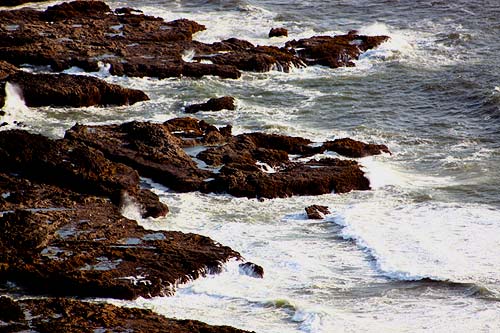
How Thick are the Rocks of Cape Perpetua? Geologically speaking, this area south of Yachats goes deeper than you'd imagine. Those rocky ledges below Perpetua go way, way down.
According to Oregon geologist Parke D. Snavely of the USGS and others from Oregon Department of Geology and Mineral Industries (in reports from the '70s through 1990), what is called the Yachats Basalt runs as deep as 750 meters (more than 2,600 feet down). The whole area is really a series of flows layered on top of each other, and most of the indivudal layers are about three meters to ten meters thick.
Hotels in Yachats - Where to eat - Yachats Maps and Virtual Tours
Cannon Beach Lodging
Nehalem Bay Lodgings
Manzanita Hotels, Lodging
Three Capes Lodging
Pacific City Hotels, Lodging
Lincoln City Lodging
Depoe Bay Lodging
Newport Lodging
Waldport Lodging
Yachats Lodging
Oregon Coast Vacation Rentals
Oregon Coast Lodging Specials
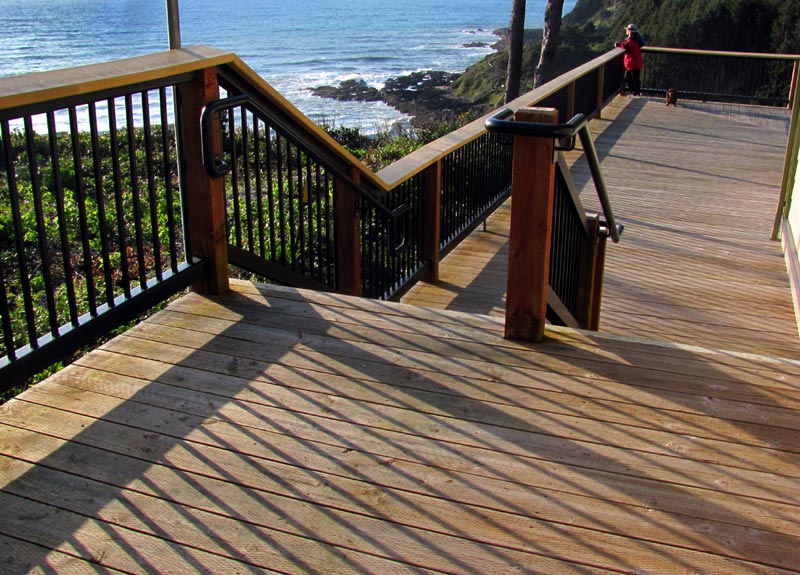
More About Oregon Coast hotels, lodging.....
More About Oregon Coast Restaurants, Dining.....
LATEST Related Oregon Coast Articles
A curious weather phenomenon that happens more out here
Curb, Road Construction Resumes in Lincoln City as Oregon Coast Season Begins...
Crews return Sept 15 with some dust and small delays. Traffi
NASA Announces First Evidence of Life on Mars in Possible Biosignature
In a former riverbed billions of years old, they found spots with interesting compounds. Astronomy
Portland, Oregon - Beaverton, Oregon Weather and Alerts | Current Conditions,...
Current weather conditions and alerts for Portland and Beaverton
Oregon Coast Scenic Railroad's Fame Engine Turns 100 Years Old with Special Runs
Sept 20 and 21 various special rides. Garibaldi events, Rockaway Beach events, Wheeler events
South Oregon Coast Goes Interstellar: Coos Bay's Sunset Bay Astronomy Fest Se...
Shore Acres State Park gets spacey. Coos Bay events
Swarm of 12 Quakes Fire Off 100 Miles from South Oregon Coast
After the initial 5.8, ranging in magnitude from 2.7 to 5.1: Coos Bay, Port Orford, Bandon, Gold Beach. Geology, weather
SOLVE Cleanup Happens Along Oregon Coast, Inland Sept 20 Through 28
SOLVE is inviting volunteers to take part. Brookings events, Gold Beach events, Port Orford events, Coos Bay events, Bandon events, Florence events, Yachats events, Newport events, Lincoln City events, Rockaway Beach events, Manzanita events, Cannon Beach events, Seaside events, Astoria events
Back to Oregon Coast
Contact Advertise on BeachConnection.net
All Content, unless otherwise attributed, copyright BeachConnection.net Unauthorized use or publication is not permitted




























